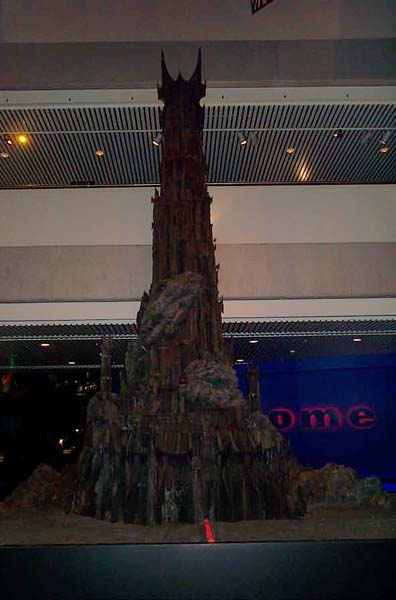By James Collyer
Lord of the Rings (LOTR) first hit the screens as a
live action film in 2001. Directed by Peter Jackson with a budget of US $93
million, set in New Zealand, with an epic following, everyone knew it was going
to be a hit. The first film alone won 4 of 13 Academy Awards: Best
Cinematography, Best Effects – Visual Effects, Best Make-up and Best Music –
Original Score. It is ranked 29th on IMDB on the world wide box
office lists of all time at US $860.7 million the lowest of the three films and
at the time was in the top 10 of all time. The Two Towers in 2002 with a budget
of $94 million won 2 of 8 Academy Awards: Best Visual Effects and Best Sound
Editing. Currently ranked 20th on IMDB with US $921.6 million, it
again broke the top 10 in 2002. Finally The Return of the King in 2003 had 11
nominations in the Academy Awards and won all 11 of them: Best Picture, Best
Original Score, Best Adapted Screenplay, Best Art Direction, Best Costume
Design, Best Film Editing, Best Make-up, Best Music (song), Best Sound Mixing
and Best Visual Effects.
Another of
the ways that made LOTR stand out when it came to visual effects was its use of
models, sets and miniatures/bigatures. Now you may be wondering what a bigature
is, well this is a bigature
This is the bigature of Barad’Dur, Sauron’s castle
in Mordor. Many of you might just be thinking that this is just a model, no
bigger than a few feet. Wrong. This bigature is a 9ft high monster, the picture
on the right is the base of model, each ridge, tower, spike etc. carved with
intricate detail so it could be filmed close up. This kind of detail is seen in
all the bigatures made for LOTR – others include: Minas Tirith, Minas Morgul,
Rivendell, Helms Deep and many more – these images were planted in backgrounds
and used in close up shots in the film with a green (blue in most cases) screen
for the surrounding setting. For example, the Helms Deep scene where Gandalf
rides with the Rohirrim towards the Uruk-hai army (another example of MASSIVE
aswell) that Hornburg bigature is set in the background.
These are but a few of the tricks, technological
advances and artistic magnificence that the LOTR trilogy changed the world of
visual effects. Other camera tricks as well as the creation whole sets (e.g.
Edoras and Fangorn Forest) and characters (Treebeard) were utilised by the crew
at WETA under Peter Jackson’s instruction to create the masterpiece which was
The Lord of the Rings. If anyone wants to learn more about how amazing the
production of the LOTR series was, I would highly recommend watching the
Appendices on the extended editions of the films.
With the first and third of the Hobbit films taking
3rd and 4th spot respectively on ‘The Numbers: Box Office
Data’ of highest budgets of all time with US $270 million I am predicting that
the films will produce visual effects to the same high standards at the very
least.



No comments:
Post a Comment